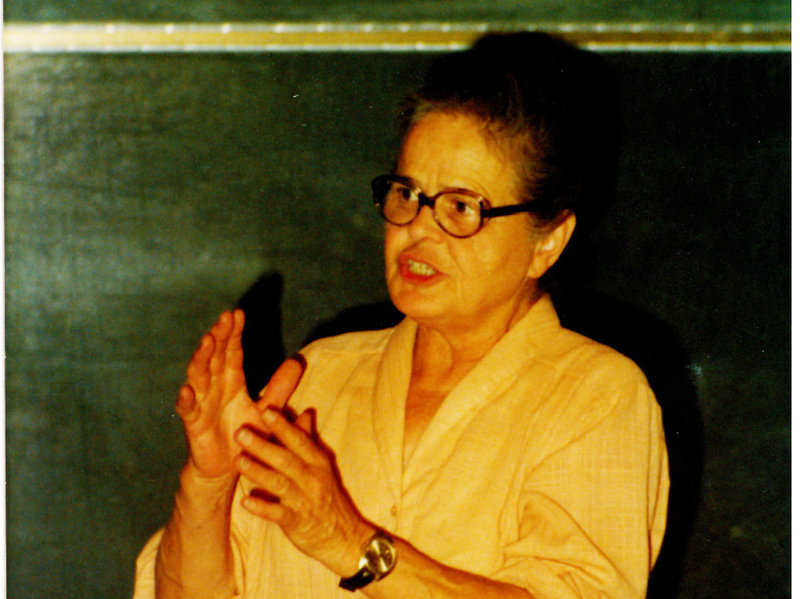How Penrosian Learning Confronts the Neoclassical Fallacy
Edith Penrose’s 1959 book, The Theory of the Growth of the Firm [TGF], fits the definition of a “classic”: a work that many cite but few have read. The view that I advance in this essay is that no one should be granted a Ph.D. in economics who has not read TGF and understood what this profound economist had to say. Penrose’s theory of how firms grow has transformative implications for comprehending how a modern economy functions and performs. It provides intellectual foundations for a theory of innovative enterprise, which, I contend, is essential to any attempt to explain productivity growth, employment opportunity, and income distribution.
Properly understood, Penrose’s theory of the firm is also, as I demonstrate in this essay, an antidote to the deception that is foundational to neoclassical economics: The theory, taught by PhD economists to millions upon millions of college students for over seven decades, that the most unproductive firm is the foundation of the most efficient economy. I call this academic nonsense the “neoclassical fallacy.” Its dissemination to a mass audience of college students began with Paul A. Samuelson’s neoclassical textbook, Economics: An Introductory Analysis, first published in 1948. Over the decades, the neoclassical fallacy has persisted through 18 revisions of Samuelson, Economics and in its countless “economics principles” clones. This essay challenges the intellectual hegemony of neoclassical economics by exposing the illogic of its foundational assumptions about how a modern economy functions and performs.
The neoclassical fallacy gained popularity in the 1950s, during which decade, as an MIT professor, Samuelson revised Economics three times. Meanwhile, Penrose derived the logic of organizational learning that she lays out in TGF from the facts of firm growth, absorbing what was known in the 1950s about the large corporations that had come to dominate the U.S. economy. Also, during that decade, the knowledge base on the growth of firms on which economists could subsequently draw was undergoing an intellectual revolution, led by the business historian, Alfred D. Chandler, Jr., who was engaged in the first stage of a career that would span more than a half century. Chandler’s contribution documented and analyzed the centrality to U.S economic development of what he would call “the managerial revolution in American business.”
In combination, the works of Penrose and Chandler form intellectual foundations for my own work on the Theory of Innovative Enterprise (TIE)—an endeavor that has enabled me, as an economist, to recognize not only the profound importance of organizational learning for economic theory but also the fallacy of the neoclassical theory of the firm for our understanding of the central institution of a modern economy, the business corporation. In this essay, I argue that the key characteristic of the innovative enterprise is fixed-cost investment in the productive capabilities of the company’s employees to engage in organizational learning. The purpose of this investment in organizational learning is to develop a higher-quality product than was previously available. When successful, the development of the higher-quality product enables the firm to capture a large extent of the market, transforming high fixed cost into low unit cost. The result is sustainable competitive advantage that enables the growth of the firm, contributing to the growth of the economy as a whole.
TIE conceptualizes how the innovating firm outcompetes the optimizing firm with its U-shaped cost curve, offered as “the theory of the firm” in virtually every introductory microeconomics since Samuelson’s 1948 publication of Economics. In the first five editions of his textbook, Samuelson attributes the U-shaped cost curve to “limitations of plant space and management difficulties” that result in diminishing average productivity of labor, treated as a variable cost, as the firm expands its output. This unproductive firm explains the limit to the growth of the firm, which in turn provides the basis for idealizing an industry populated by large numbers of equally unproductive firms engaged in “perfect competition.” The more unproductive the firm, the more “perfect” the competition.
The textbook proof of perfect competition as the ideal of economic efficiency is the neoclassical monopoly model, based on the illogical assumption that the monopolist maximizes profit subject the same cost structure as perfect competitors. But, then, how did the monopolist come to dominate its industry? TIE explains how through a combination of strategy, organization, and finance, an innovating firm can transform technologies and access markets, putting in place a cost structure that can expand output and lower price, outcompeting the unproductive firm of neoclassical theory, with its manager following the textbook advice of maximizing profit subject to “given” technological and market constraints.
In the sixth edition of Economics, Professor Samuelson excised his own explanation (“limitations of plant space and management difficulties”) for the limits to the growth of the firm, relying instead on what he called “the famous law of diminishing returns.” The neoclassical fallacy remained, but was rendered more opaque, leaving generations of “well-trained” economists, indoctrinated in the neoclassical fallacy, to espouse what I call “the myth of the market economy”: the dominance in economic thinking of the view that, ideally even if not actually, a modern economy should rely on markets to allocate resources to their most efficient uses—in effect viewing the large corporation as a massive “market imperfection.” What economics needs, however, is a theory of the conditions under which business enterprises as complex social organizations can succeed in generating higher-quality, lower-cost products, thus putting the “most efficient uses” in place.
In the concluding section of “Is the Unproductive Firm the Foundation of the Most Efficient Economy?” I summarize the methodological implications of TIE for studying the operation and performance of a modern economy. To get beyond the neoclassical fallacy, economists have to stop relying on constrained-optimization methodology. Rather, they need to be trained in a “historical transformation” methodology that integrates history and theory. It is a methodology in which theory serves as both a distillation of what we have learned from the study of history and a guide to what we need to learn about reality as the “present as history” unfolds.






